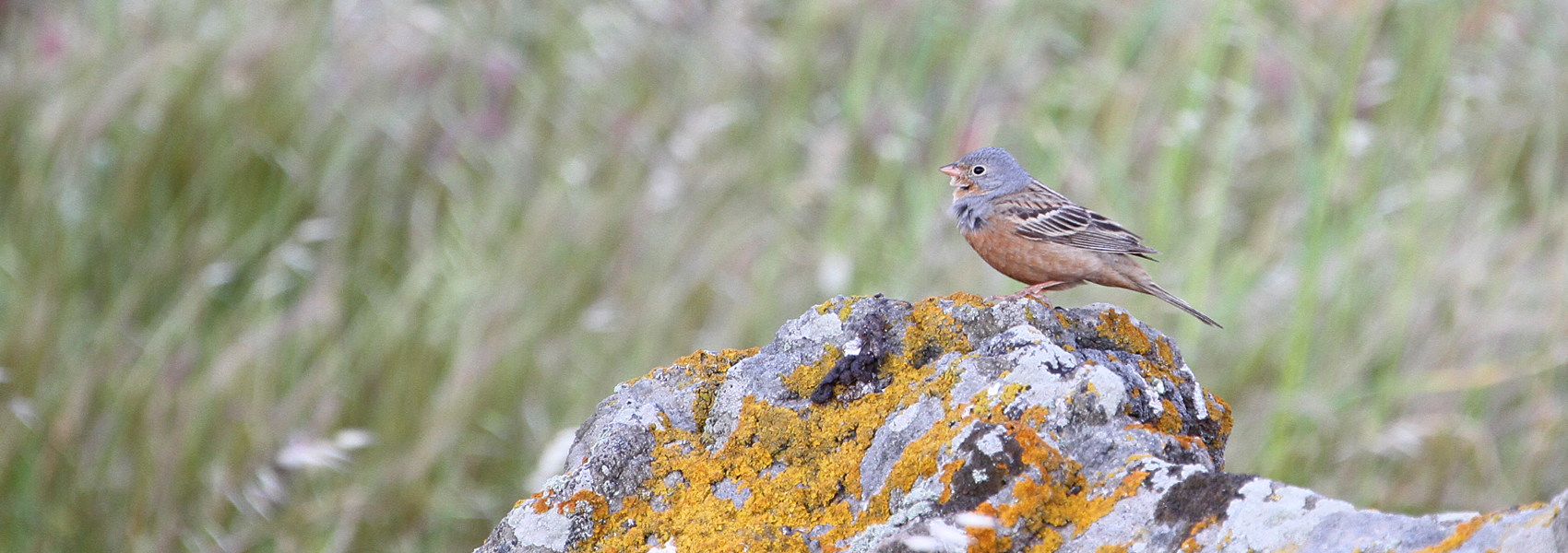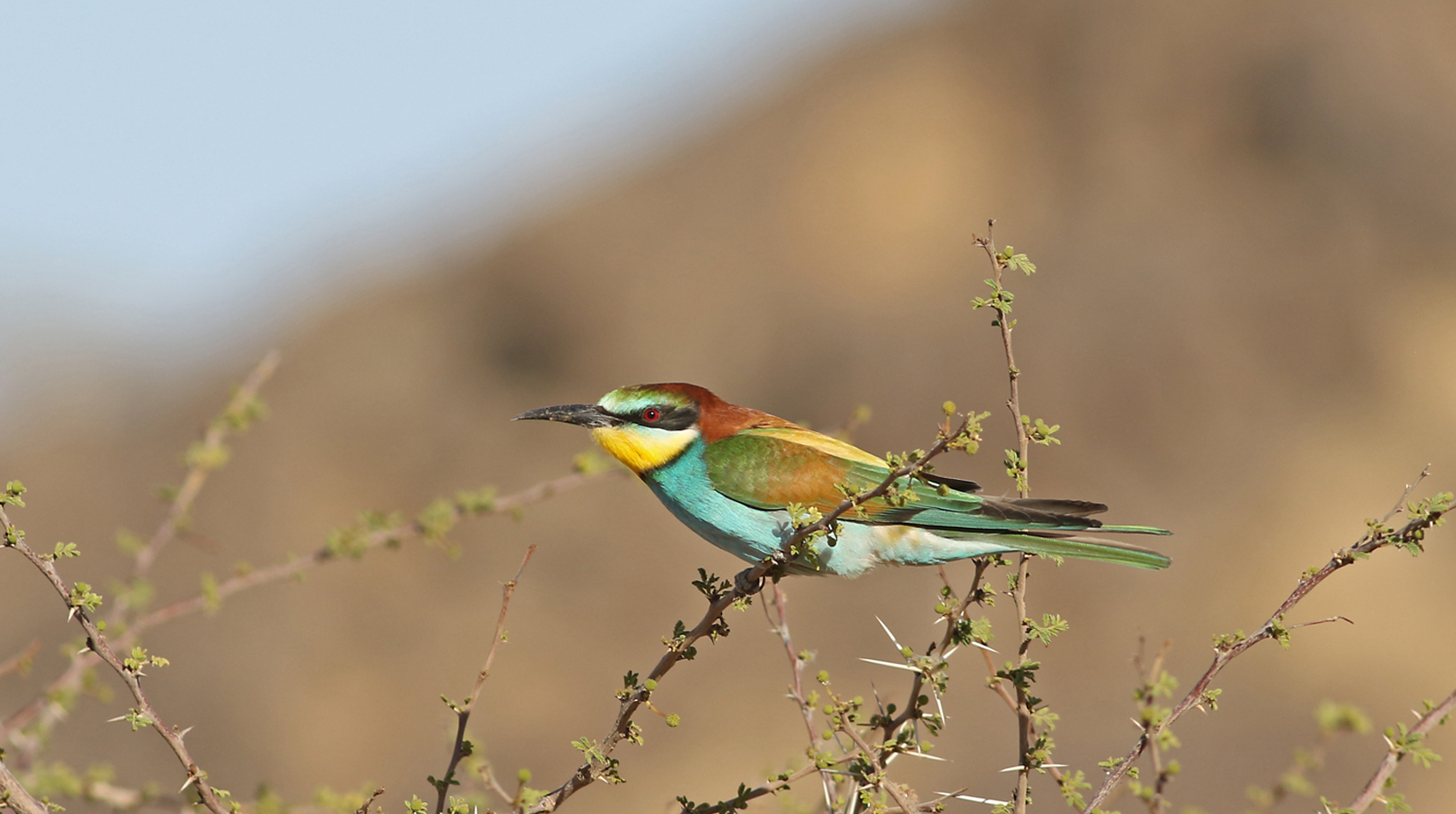
Tour Dates: Tuesday 26th April – Tuesday 3rd May 2022 (Kos to Kos)
Tour Price: £1,650pp plus flight
Estimated Flight Price: London to Kos approx. £300 return
Deposit: £400 per person
Conservation Donation from Wise Birding: £150 – £250
Minimum Number: 5 people
Maximum Group Size: 7 people
Target Species
Birds: Glossy Ibis, Little Bittern, Bonelli’s Eagle, Eleonora’s Falcon, Long-legged Buzzard, Yelkouan Shearwater, Scopoli’s Shearwater, numerous passage waders, Collared Pratincole, Ruppell’s Warbler, Eastern Olivaceous Warbler, Eastern Subalpine Warbler, Eastern Orphean Warbler, Golden Oriole, Roller, Masked Shrike, Cretzschmar’s Bunting and much more!
Other: A good selection of reptiles and butterflies and botany too!
Tour Summary
Lying in the southern Aegean Sea the small Greek Island of Kos with a wealth of archaeological sites makes for a fascinating birdwatching location during peak migration. It makes for a quieter alternative to the very popular Greek island of Lesvos, also well known for its bird migration. The island of Kos is a perfect one base holiday with great birding, history, scenery, food and a good selection of reptiles and butterflies too.
Close to the Turkish mainland with several good wetlands, mountains & hills it provides diversity for both resident and migrant birds. The island is only 40 miles long so any part of it can be easily reached in a day allowing plenty of time in the field. From the stunning deserted village of Old Pili in the mountains to the southern peninsula of Cape Krikelos, birds can be found across the whole island. Bonelli’s Eagle are a feature of Kos with birds regularly drifting over during visits to the hills and mountains. Joining them are numerous breeding Lesser Kestrels, Eleanora’s Falcon, long-legged Buzzard and Short-toed Snake Eagle. The scrub and dry slopes on the hillsides can be alive with singing Sardinian, Eastern Subalpine, Eastern Olivaceous, and occasional Ruppell’s Warblers together with the stunning Cretzschmar’s Bunting. Grassy enclosures in the early spring are perfect for Eastern Black-eared Wheatear and are grazed by Spur-thighed tortoises, occasional basking Balkan Whip Snakes and tiny Snake-eyed Skinks are numerous.
The island has several wetlands all of which offer different birdwatching opportunities from the fringed reserve of Psalidi and the old saltpans of Tigaki. Here, numerous waders, flamingos and terns can be found and the damp fields around Kos town often reveal waders and herons too. The timing of a holiday to Kos is critical, we will be there at the time when bird migration is still peaking and most summer migrants like Roller and Bee-eater have just arrived back on their breeding grounds. We will visit the ruins of Asklepion which have wonderful views looking across to Turkey. The harbour side Castle of Neratzi rebuilt by the Knights of St John provide nesting sites for both Pallid and Common Swift. The grounds are a floral wonderland attracting many butterflies including the beautiful Scarce and common Swallowtails. A few miles to the south and a 45 minute sea crossing lies the volcanic island of Nisyros. Here the star attraction is a sizeable population of Eleonora’s Falcons.
ACCOMMODATION: 7 nights on the island of Kos
7 nights in comfortable Kos town hotel close to birding sites
Inclusive Meals: Full board
DAY 1: Arrival
After arriving at the airport we will take the short transfer to our hotel situated just outside Kos Town. The hotel is close to some coastal wetland where migrating waders and waterfowl drop in daily. The scrub and open countryside hold birds including migrant and resident warblers, wheatears, harriers, Spanish Sparrows & Woodchat Shrikes. Nearby are the Tingaki saltpans where possibilities include Ruddy Shelduck, Collared Pratincole, Little Bittern, Squacco Herons, Glossy Ibis, White-winged Black Tern, Whiskered Tern and Slender-billed Gull. Some of the wintering Greater Flamingos may still be lingering, while Short-toed Lark and Eastern Olivaceous Warblers will be declaring territories and singing. If there is time in the afternoon we will head out to the saltpans. During the evening we will have a quick look off the headland for passing Yelkouan and Scopoli’s Shearwaters. Overnight Kos
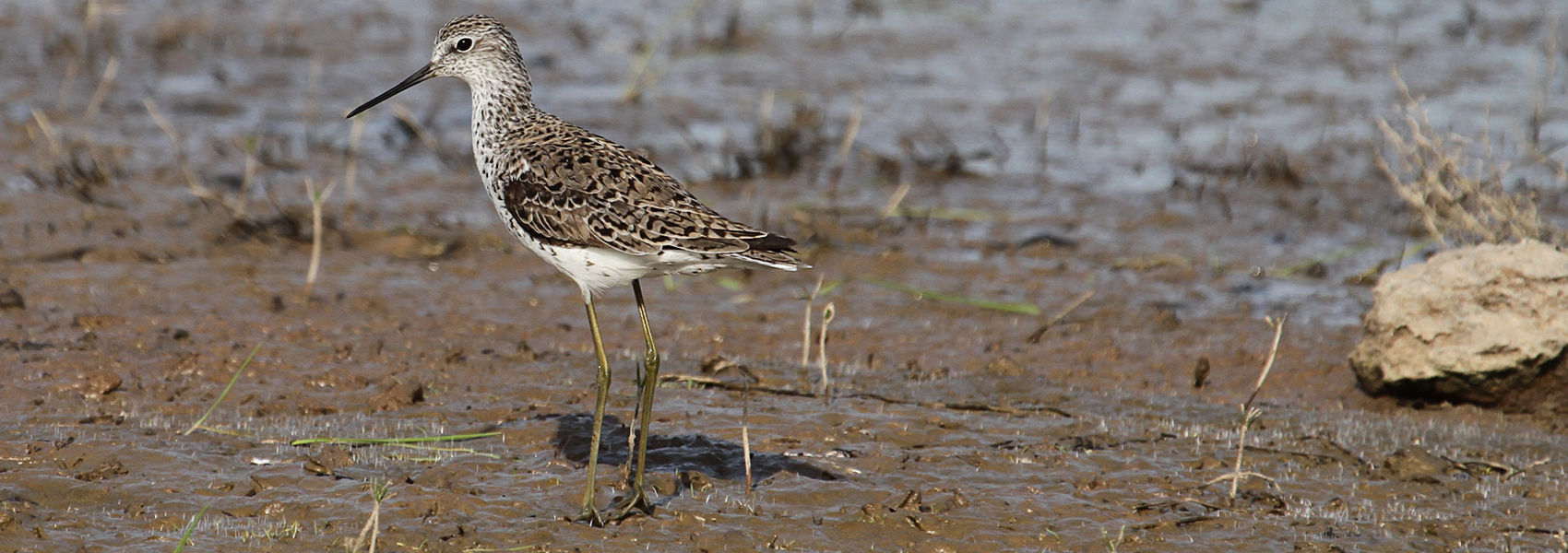
DAYS 2 – 7: Exploring Kos Island – Boat trip to Nisyros Island
Much of our itinerary will be dictated by weather and bird movements, but we will spend every day in the field visiting different habitats to maximise our chances of newly arrived migrants! The Tingaki saltpans will feature regularly on our daily excursions with an afternoon and/or morning stop to see what new birds have arrived. Spur-winged Plover and Kentish Plover, Black-winged Stilt, Great Reed Warbler and Ruddy Shelduck are all regular visitors and breeders. Passage birds may include good numbers of Wood Sandpiper and Ruff, Collared Pratincole, Little Bittern, Squacco Heron, Glossy Ibis, White-winged Black Tern, Whiskered Tern and Slender-billed Gull.
Inland Mount Dikeos rises to 850m and is a great birding site. Here amongst the scrub and olive groves a fine range of breeding birds can be found. These include the smart but elusive Ruppell’s Warbler, Black-eared Wheatear, Serin as well as both Cretzschmar’s Bunting and Black-headed Bunting in full song. We will also look for both Masked Shrike and Lesser Grey Shrike. Chukar often call from the hillsides, while the skies above should reveal one of the healthy population of Bonelli’s Eagles. Eleanora’s Falcons and Lesser Kestrels hawk for insects over the villages and both Short-toed Snake Eagle and Lanner Falcons are regularly seen too. Tortoises graze the lush mountain meadows and Agama Lizards bask in the sun. Great-spotted Cuckoos are usually found in the scrub while passage flycatchers and warblers feed in old mountain fields with fig and olive trees. We will spend one morning in the Pyli area and take an afternoon walk along to Agios Dimitrios, keeping an eye out for Long-legged Buzzards, Red-rumped Swallows and perhaps an elusive Northern Goshawk.
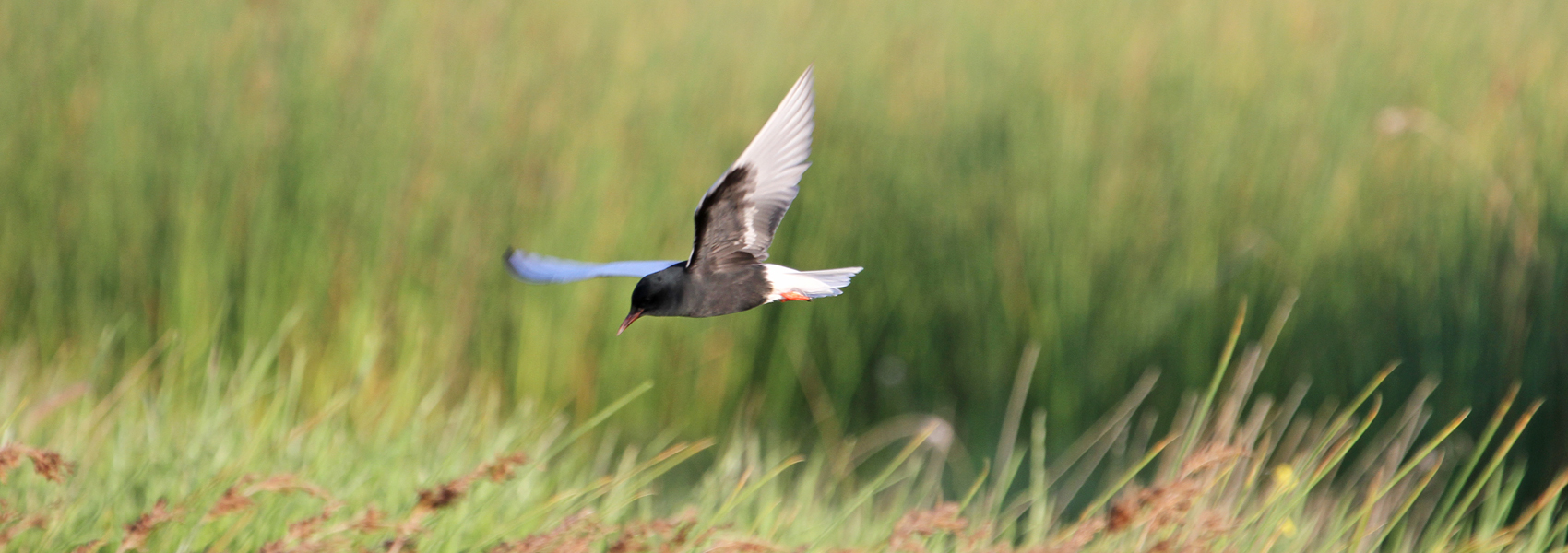
We will cover the botanically rich coastal plains near Mastichari. This open agricultural area is home to Stone Curlew and Short-toed Lark, colourful Bee-eaters and maybe early returning Rollers. Dapper Eastern Black-eared Wheatears and Hoopoes gleam in the sunshine while both Eastern Subalpine and Eastern Olivaceous Warblers sing from the scrub along the field boundaries. Inland, the cool Plaka Forest can hold a good mix of flycatchers and warblers on passage. At the north of the island, Kos town with its sheltered harbour makes for a lovely place to spend the morning. The historic buildings from Ancient Greek, Roman and Byzantine periods, and the plane tree from where Hippocrates, the ‘father of medicine’ is said to have given his lectures around 460 BC. The fort and harbour offer some surprisingly good birding with Audouin’s Gull among the commoner Yellow-legged Gulls as well as three species of Swift. The grounds are very good for orchids and surrounding pines and tamarisks often hold migrants as well as Subalpine Warblers Hoopoe, Roller and roosting Scops Owls. One evening after dinner we will drive inland to the olive groves to experience an eerie dusk chorus of Stone Curlews, Nightjars and Scops Owls.
The Psalidi Marsh and headland of Cape Skandario has some excellent migrant habitat. Purple Herons sometimes gather in flocks here and crakes regularly feed around the edges of the pools together with colourful flocks of Bee-eaters, Yellow Wagtails of several sub-species, Red-throated Pipits and Spanish Sparrows. Looking out to sea, passing terns and other seabirds are visible from the point. At the south of the island, Agios Ioannis is another excellent place for migrants as well as Chuckar, Bonelli’s Eagle, Peregrine, Lesser Kestrel and Eleonora’s Falcon. Olive groves on this southern tip here can produce more migrants including Golden Oriole.
On one day we will take a boat trip to the volcanic isle of Nisyros. During the 45 minute ferry trip we will scan the sea for Yelkouan and Scopoli’s Shearwaters as well as Audouin’s Gulls. The volcanic crater on Nisyros is one of Greece’s most famous geological attractions and has the added feature of breeding Eleonora’s Falcons!
Tawny Pipits feed around the crater, and Woodchat Shrikes and Sardinian Warblers are common in the olive groves. Nisyros is a wild island, and is little-known ornithologically but we should find a good range of breeding birds including Eastern Subalpine and Eastern Orphean Warblers amongst the scrub-covered hillsides. The charming small town of Mandraki is the main settlement on the island with its narrow streets and attractive chapels. It makes an excellent venue for a restful afternoon, where tavernas next to the harbour offer excellent vantage points to watch Mediterranean Shag and Audouin’s Gulls.
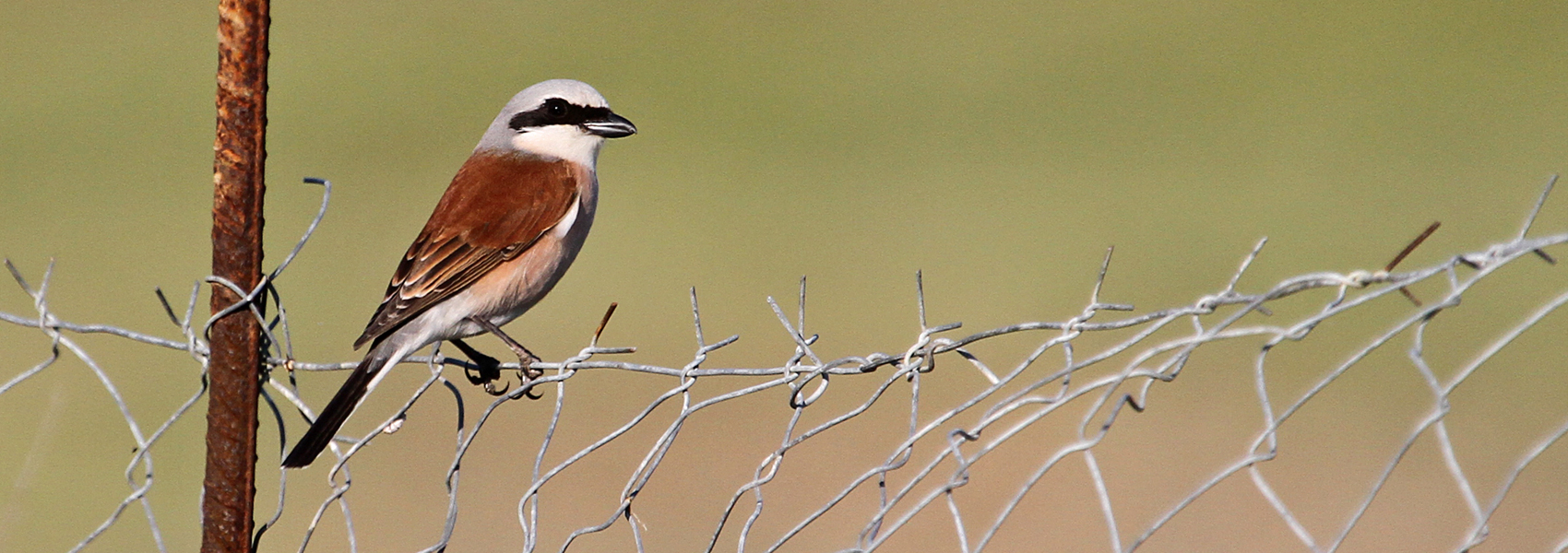
DAY 8
Dependent on our flight time, we will do some final birding close to our hotel before taking the transfer to the airport whereto tour concludes.
Please note this is a flexible itinerary which may need to be adjusted slightly dependent on arrival / departure times, weather conditions and the most recent information from our local guides
Leaders: Mike Langman
Included in cost: All accommodation in twin en suite rooms, all meals, bottled water, ground transport, boat trip, entrance fees and services of leaders
Not included in cost: International airfare, travel insurance, drinks other than water and any airport/visa fees
Single Supplement: £150
Transport: Minibus throughout tour
Difficulty: Easy
We will take gentle walks of 1 – 3 miles a day over mainly easy terrain. Shorter walks on steeper slopes are optional. A reasonable level of fitness is required.
Climate: Generally warm with temperatures typically around 20+ degrees C. However the weather is a little unpredictable at this time of year and rain is also possible!
Tour Start Point: Kos airport, Greece
Tour End Point: Kos airport, Greece
Suggested Airlines: Easyjet or TUI
